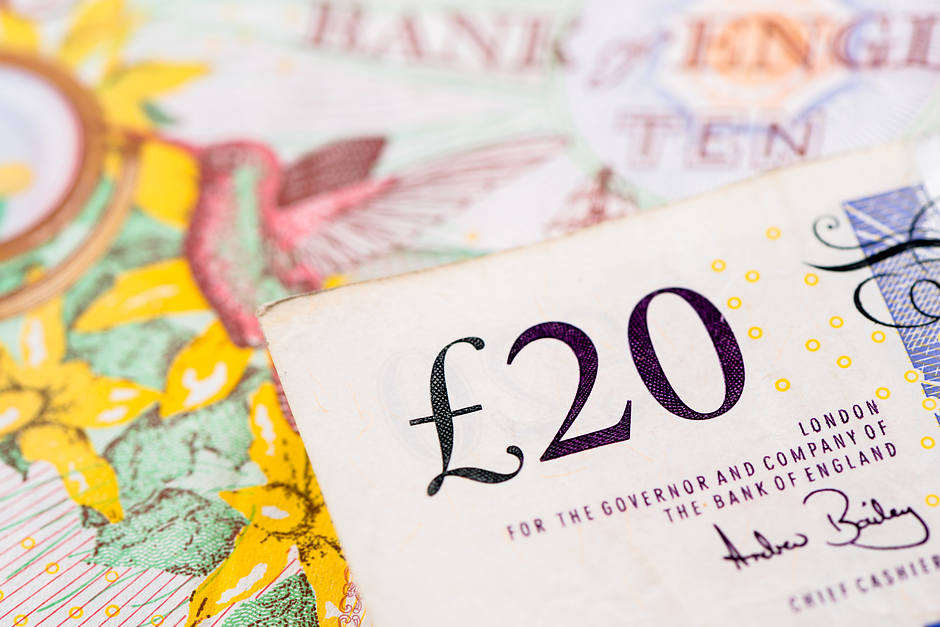GBP/USD retreats from multi-week top, slides below 1.2700 on stronger USD
- GBP/USD kicks off the new week on a weaker note amid the emergence of some USD buying.
- Trump's tariff threats, geopolitical risks and bets for a less aggressive Fed easing boost the USD.
- Diminishing odds for a December BoE rate cut could offer support to the GBP and the major.

The GBP/USD pair attracts some sellers on the first day of a new week and reverses a major part of Friday's positive move to mid-1.2700s, or a nearly three-week high. The intraday slide drags spot prices back below the 1.2700 mark in the last hour and is sponsored by a goodish pickup in the US Dollar (USD) demand.
Against the backdrop of persistent geopolitical risks, worries about the second wave of trade war after US President-elect Donald Trump takes office in January drive some haven flows towards the Greenback and exert some pressure on the GBP/USD pair. In fact, Trump threatened a 100% tariff on the so-called 'BRICS' nations – Brazil, Russia, India, China, and South Africa – if they replace the USD with another currency for international transactions.
Trump has also promised big tariffs against America’s three biggest trading partners – Mexico, Canada and China. This could push consumer prices higher and set the stage for the Federal Reserve (Fed) to stop cutting interest rates or possibly raise them again. Apart from this, the cautious market mood turns out to be another factor that assists the safe-haven buck in recovering a part of last week's heavy losses to its lowest level since November 12.
The downside for the GBP/USD pair, however, seems limited on the back of reduced bets for another interest rate cut by the Bank of England (BoE) this year. Data released recently showed that the underlying price growth in the UK gathered speed and accelerated sharply to the 2.3% YoY rate in October. This suggests that the BoE will move cautiously, which could underpin the British Pound (GBP) and lend some support to the currency pair.
Traders might also refrain from placing aggressive directional bets ahead of this week's important US macro data scheduled at the beginning of a new month, starting with the ISM Manufacturing PMI later this Monday. The market focus, however, will be on the critical US monthly employment details, popularly known as the Nonfarm Payrolls (NFP) report on Friday. This might provide cues about the Fed's rate cut path and influence the USD price dynamics.
US Dollar PRICE Today
The table below shows the percentage change of US Dollar (USD) against listed major currencies today. US Dollar was the strongest against the Euro.
| USD | EUR | GBP | JPY | CAD | AUD | NZD | CHF | |
|---|---|---|---|---|---|---|---|---|
| USD | 0.47% | 0.40% | 0.41% | 0.32% | 0.27% | 0.42% | 0.37% | |
| EUR | -0.47% | -0.11% | -0.05% | -0.13% | -0.10% | -0.02% | -0.08% | |
| GBP | -0.40% | 0.11% | 0.04% | -0.02% | 0.02% | 0.09% | 0.00% | |
| JPY | -0.41% | 0.05% | -0.04% | -0.08% | -0.09% | 0.06% | -0.09% | |
| CAD | -0.32% | 0.13% | 0.02% | 0.08% | 0.11% | 0.11% | 0.03% | |
| AUD | -0.27% | 0.10% | -0.02% | 0.09% | -0.11% | 0.07% | -0.01% | |
| NZD | -0.42% | 0.02% | -0.09% | -0.06% | -0.11% | -0.07% | -0.06% | |
| CHF | -0.37% | 0.08% | -0.01% | 0.09% | -0.03% | 0.01% | 0.06% |
The heat map shows percentage changes of major currencies against each other. The base currency is picked from the left column, while the quote currency is picked from the top row. For example, if you pick the US Dollar from the left column and move along the horizontal line to the Japanese Yen, the percentage change displayed in the box will represent USD (base)/JPY (quote).
Author

Haresh Menghani
FXStreet
Haresh Menghani is a detail-oriented professional with 10+ years of extensive experience in analysing the global financial markets.

















